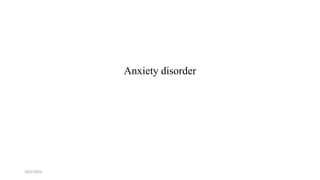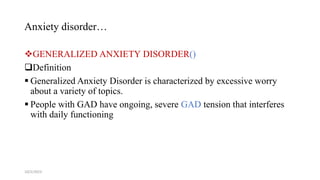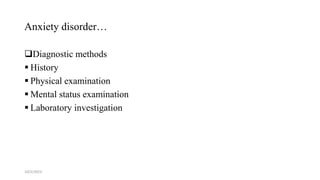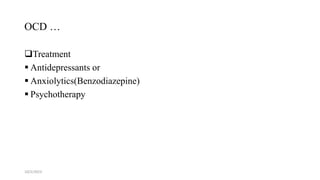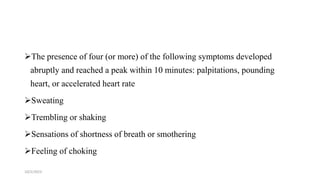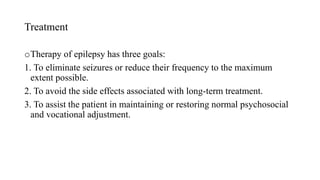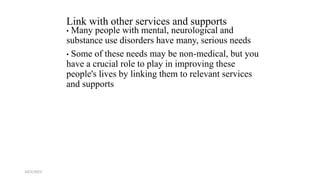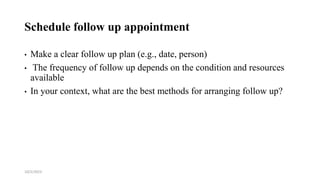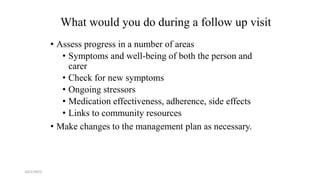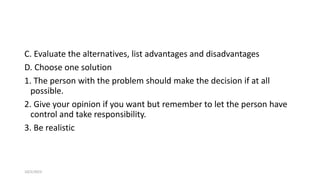Anxiety disorders are among the most common psychiatric conditions. They are characterized by excessive anxiety or worry that interferes with daily functioning. The document defines various types of anxiety disorders including generalized anxiety disorder, panic disorder, and specific phobias. It provides information on epidemiology, etiology, clinical features, diagnostic criteria, differential diagnosis, and treatment options for these conditions.
